With Day 1 of the 2017 NFL Draft in the books the Pro Football Focus analysis team takes a look at the top remaining players on our draft board. Running back Dalvin Cook (FSU) and edge defender Carl Lawson (Auburn) are among the highest-ranked prospects headed for Day 2.
1. Dalvin Cook, RB, Florida State
Big Board Rank: 9
Position Rank: 1
Cook has outstanding vision and patience to allow blocks to develop in zone-blocking schemes. His acceleration when he makes a decision is elite, and he is one of the best at making defenders miss. Cook is capable of overcoming poor blocking, and he led the nation with 99 total missed tackles forced last season. He needs to vastly-improve his ball security and in pass protection, but his big-play ability outweighs those enough to keep the top spot. — Matt Claassen, @PFF_Matt
Big Board Rank: 14
Position Rank: 4
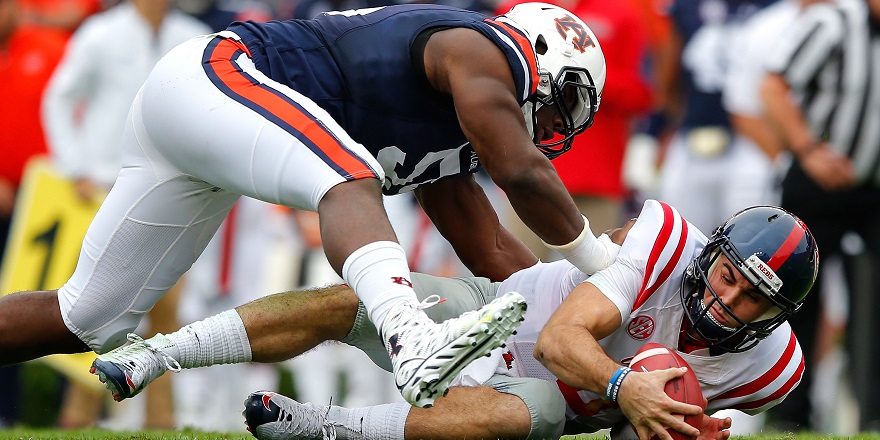
The pass-rushers in the SEC last season kept a good number of quarterbacks up late on Friday nights. Lawson registered nine sacks, 13 hits, and 42 hurries in 2016 on only 364 pass-rushing snaps. Lawson wins the edge on offensive tackles as much as anyone in this class and makes them worry about getting out of their stance quickly with his first step. He pairs that up with some of the strongest hands I’ve seen in the class that keep him in control of interactions. — Mike Renner, @PFF_Mike
3. Jordan Willis, Edge, Kansas State
Big Board Rank: 15
Position Rank: 5
As owner of the highest overall grade of any edge player in the country a season ago, Willis absolutely dominated the Big 12. Then he went to Indianapolis and put up the most impressive combine performance of any edge prospect in the class. So if you’re looking for a player who checks the production and athleticism boxes, Willis is your guy. His biggest issue was level of competition faced. The Kansas State defensive end looked far more pedestrian in one-on-one’s at the Senior Bowl, but come actual game time in Mobile, and Willis registered two sacks and three hurries. — Mike Renner, @PFF_Mike
4. Malik McDowell, Defensive Interior, Michigan State
Big Board Rank: 21
Position Rank: 2
McDowell is somewhat polarizing as a prospect. In conjunction with having to address some off-field concerns, McDowell does not always appear ideally suited to a position on the interior. His desire to mix it up with multiple blockers against power running schemes appears minimal at best; his skill-set is pure finesse. Players with McDowell’s athleticism, however—capable of shutting down plays deep into the backfield—are always in high demand. Additionally, he possesses the kind of refinement essential to succeeding in the NFL, displaying excellent hand placement and a fully-stocked pass-rush repertoire. McDowell’s capacity for collapsing the pocket will likely see him selected on Day 1. — John Breitenbach, @PFF_John
5. Jourdan Lewis, CB, Michigan
Big Board Rank: 24
Position Rank: 3
Regarded as undersized by a lot of people, Lewis has been one of the top cornerbacks in the nation over the past two seasons. Versatile enough to be a starter either on the outside or in the slot, he has allowed just four touchdowns from the 186 passes thrown into his coverage over the past three seasons, coming away with six interceptions and 28 pass breakups in that span. — Gordon McGuinness, @PFF_Gordon
6. Tim Williams, Edge, Alabama
Big Board Rank: 26
Position Rank: 7
On a snap-for-snap basis, Williams has been the most effective pass-rusher in the nation over the past three seasons. The issue is that even over those three seasons, he’s only accumulated 685 snaps (485 as a pass-rusher). While he’s notched a ridiculous 22 sacks, 19 hits, and 83 hurries on those plays, it’s still concerning that he couldn’t see the field more. While Williams looks like one of the most athletic edge rushers in the class on tape, his combine performance was lackluster. — Mike Renner, @PFF_Mike
7. Forrest Lamp, G, Western Kentucky
Big Board Rank: 27
Position Rank: 1
Maybe the cleanest prospect in the draft, Lamp has multiple years of top-notch grading at left tackle to back it up. While level of competition is always a concern, Lamp allowed one total QB pressure against the ferocious pass-rushing threats from Alabama in Week 2. — Mike Renner, @PFF_Mike
8. Zach Cunningham, LB, Vanderbilt
Big Board Rank: 30
Position Rank: 2
Cunningham has the combination of athleticism, size, and physicality needed to be an excellent every-down linebacker in the NFL. He excels at taking on blocks, and finished fourth among all FBS inside linebackers in 2016 in run-stop percentage despite missing 13 tackles. He also displays impressive skills in man coverage, as he has the speed and strength to stay on the hip of tight ends even on downfield routes. He should also be selected before the end of Day 1. — Josh Liskiewitz, @PFF_Josh
9. Obi Melifonwu, S, Connecticut
Big Board Rank: 32
Position Rank: 3
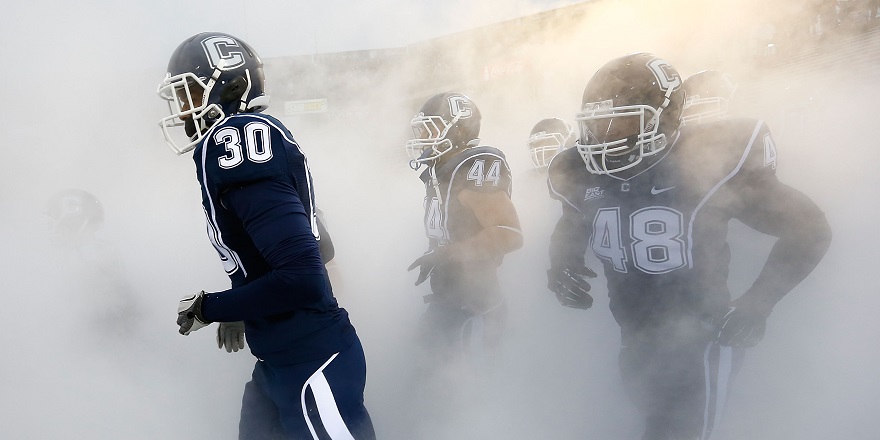
Much more than just a combine and Senior Bowl-wonder, Melifonwu’s film largely backs up his outstanding draft-prep season. He flashes impressive range for a player his size, but is also excellent against the run in the box because of his ability to square up and finish tackles consistently (ninth among all FBS safeties in 2016 in run-stop percentage). He is a matchup-breaker because of his size, speed and physicality in coverage, and gave up just 40 total receiving yards in his final five college games. — Josh Liskiewitz, @PFF_Josh
10. Sidney Jones, CB, Washington
Big Board Rank: 33
Position Rank: 5
Jones would be even higher on this list were it not for the injury that ruined his pro day. At his best in press man, Jones didn’t allow a single touchdown on throws into his coverage in 2016. He plays the ball well in the air, too, with nine interceptions and 16 pass breakups over the past three seasons. While the injury will push him down draft boards, someone is likely to get a steal once he recovers. — Gordon McGuinness, @PFF_Gordon
Big Board Rank: 34
Position Rank: 4
There’s no question that Joe Mixon is a very talented football player. He outperformed his counterpart, Samaje Perine, this season as he pried playing time away. In addition to being a dynamic runner, Mixon also was a very productive receiver. Strictly on the field, he has the potential to be a No. 1 running back with a great combination of size and agility, and is worthy of a second-round draft pick. However, his assault charge in 2014 raises questions on whether he should be drafted at all. — Matt Claassen, @PFF_Matt
12. Cordrea Tankersley, CB, Clemson
Big Board Rank: 39
Position Rank: 8
Allowing an NFL passer rating of 40.6 in 2016, Tankersley was one of the top-graded cornerbacks in football for the National Champion Clemson Tigers. Allowing just one touchdown and recording four interceptions and nine pass breakups, the only big concern with Tankersley is that he can be a little too physical in coverage, something he’ll need to improve upon to avoid being heavily penalized in the NFL. — Gordon McGuinness, @PFF_Gordon
Big Board Rank: 40
Position Rank: 9
On-field production saw Tabor ranked close to Ohio State’s Lattimore early in the pre-draft process, but few players were as disappointing as Tabor when it came to measurables. After recently clocking at 4.7 in the 40-yard dash at the Florida pro day, his stock appears to be on the way down, despite allowing NFL passer ratings of just 33.0 and 41.3 over the past two seasons, respectively. — Gordon McGuinness, @PFF_Gordon
14. Justin Evans, S, Texas A&M
Big Board Rank: 42
Position Rank: 4
Evans is worth an early Day 2 selection because of his excellent coverage skills, but his tackling is a serious concern. He finished 2016 just 316th in tackling efficiency at the position with 21 missed tackles, but he defended 12 total passes while giving up a QB rating of just 53.1 on throws into his coverage. — Josh Liskiewitz, @PFF_Josh
15. Dede Westbrook, WR, Oklahoma
Big Board Rank: 43
Position Rank: 4
Westbrook was one of if not the most productive receiver in college football last season, winning the Biletnikoff Award as well as getting an invite to the Heisman Trophy ceremony as a nominee. While it’s easy to dismiss Westbrook as a product of the wide-open Big 12 offense of Oklahoma, he’s much more than that. Westbrook is more than just fast, he’s incredibly quick out of his breaks and knows how to run every route. He knows how to set up routes with double moves and head fakes, and once he has a step on a defender they probably aren’t catching him. He’s got great hands, and is very impressive after the catch. While on tape he seems to play bigger than he is, his size may force him into the slot early in his NFL career. But watching him play outside, he definitely has the potential to move out there in the future. — Bryson Vesnaver, @PFF_Bryson
16. Alvin Kamara, RB, Tennessee
Big Board Rank: 44
Position Rank: 5
Kamara doesn’t have the season-long volume of production like the top three players, but in limited playing time, he performed just as well despite running behind one of the worst run-blocking units in the nation. Kamara is one of the most elusive backs in the draft, with 39 missed tackles forced on 143 touches in 2016. He needs improvement in pass protection, but he can make an immediate impact as a receiver out of the backfield. — Matt Claassen, @PFF_Matt
17. Joe Mathis, Edge, Washington
Big Board Rank: 46
Position Rank: 11
Mathis is the wild card of this edge class. His games against Oregon and Stanford were of first-rounder quality, but a foot injury suffered in that Oregon game cost him the majority of his senior year. In those two games, Mathis racked up 14 QB pressures, which is more than he averaged in his previous two full seasons at Washington. — Mike Renner, @PFF_Mike
18. Ahkello Witherspoon, CB, Colorado
Big Board Rank: 48
Position Rank: 10

Yet another long, athletic cornerback, Witherspoon broke out with a productive 2016 before putting together a dominant NFL Combine at about 6-foot-3. He tied for the national lead with 13 pass breakups while allowing only 31.8 percent of his targets to be completed, third-best in the country. Witherspoon has the size and athleticism that press-man coverage teams covet, and that may push him even higher up the board come draft weekend. — Steve Palazzolo, @PFF_Steve
Big Board Rank: 49
Position Rank: 1
The highest-graded center on our board, Pocic is an oddity for the position at 6-foot-6. Even at that height, he still has the flexibility to consistently gain leverage on nose tackles. Pocic has scheme versatility and multiple years of quality play in the SEC to back up his ranking. — Mike Renner, @PFF_Mike
20. Chidobe Awuzie, CB, Colorado
Big Board Rank: 50
Position Rank: 11
Part of a loaded Colorado secondary, Awuzie put together three strong years of grading, culminating with a playmaking 2016 effort that saw him break up nine passes and intercept another. He has experience playing both outside and in the slot, and he fits better in more of a zone-heavy scheme, where his quick closing ability will be on display. — Steve Palazzolo, @PFF_Steve
21. Kevin King, CB, Washington
Big Board Rank: 51
Position Rank: 12
Few cornerbacks can dominate the movement drills at the combine at 6-foot-3, but that’s just what King did. He turned quite a few heads with his performance, and when combined with some highlight-reel plays in coverage, the splash is definitely there to King’s game. He has the size and movement skills to play press coverage, but also has a good feel for zone, making him a versatile option in the loaded cornerback class. — Steve Palazzolo, @PFF_Steve
22. Zay Jones, WR, East Carolina
Big Board Rank: 52
Position Rank: 5
Jones has become the epitome of a sure-handed underneath receiver over the past couple years. While the East Carolina wide receiver has amassed an incredible 462 targets over the past three years, he dropped only 17 of his 360 catchable targets. Still, due to coming from a small school and having played against lesser competition, Jones was flying under the radar for quite a while and people have really started talking about him mainly because he surpassed expectations with an impressive week at the Senior Bowl. Although Jones’ play is not necessarily extremely eye-catching, but he can be one of the most useful and reliable members of an offense. Overall, Jones’ production speaks for itself and he could become immensely useful for teams in moving the chains in an unspectacular way. — Bryson Vesnaver, @PFF_Bryson
23. Caleb Brantley, Defensive Interior, Florida
Big Board Rank: 53
Position Rank: 3
Brantley’s college production, or lack thereof, was based predominantly on limited exposure rather than quality. In his first three years at Florida, he managed just over 1,100 snaps, never seeing more than 48.3 percent of reps in any season. Like the other members of the top three, Brantley’s skill-set is ideal for the modern NFL. His quick hands and rapid first step ensure that linemen consistently fail to tie him up effectively. Brantley is a zone scheme’s kryptonite; his fast-twitch style makes executing reach blocks nearly impossible. Although he failed to register a high volume of QB pressures (only 29 total as a junior), Brantley amassed that total on just over 190 snaps. Even in a rotational role as a rookie, he could dramatically improve any defensive line. — John Breitenbach, @PFF_John
24. Taylor Moton, G, Western Michigan
Big Board Rank: 54
Position Rank: 2
In 2015 it was Moton, not fellow teammate and fourth-round pick Willie Beavers, who was worthy of being an All-Conference offensive lineman in the MAC. Moton then made the switch from guard to tackle as a senior with stellar results. He didn’t allow a single sack and only eight total QB pressures all year long. Some may still even see Moton as a tackle at the next level. — Mike Renner, @PFF_Mike
Big Board Rank: 55
Position Rank: 2
At a position defined by consistency, the number of mental lapses from Robinson are concerning. Whether it’s penalties (23 the past two seasons), missed assignments, or lethargic reps, Robinson has a good deal of issues to shore up. That being said, he has a blend of power and athleticism that resembles All-Pro-caliber players at the position. Maybe the most encouraging sign for the true junior is that he went from seven sacks allowed in 2015 to only one in the 2016 season. — Mike Renner, @PFF_Mike
26. Gerald Everett, TE, South Alabama
Big Board Rank: 56
Position Rank: 3
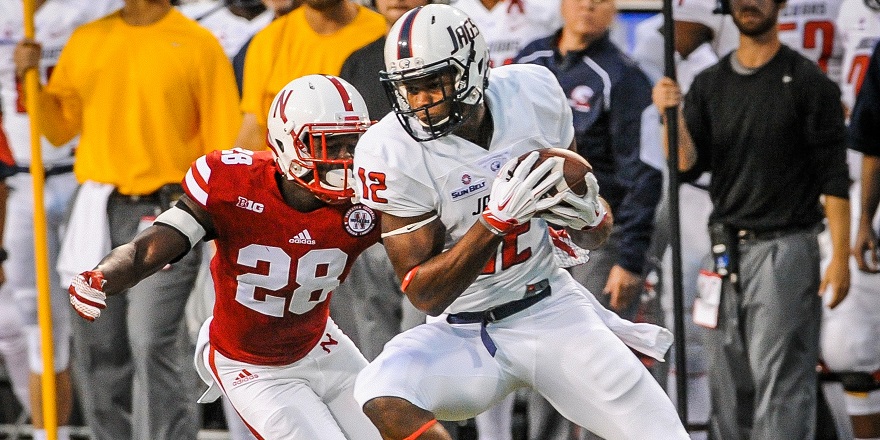
Everett is an athletic freak, earning “top performer” marks at the NFL Combine in the following events: bench press (22 reps, third-most among TEs), vertical jump (37.5 inches, third-best), broad jump (126 inches, fifth-best), 3-cone drill (6.99 seconds, fourth-best) and the 20-yard shuttle (4.33 seconds). That athleticism stands out on his tape, as well. He’s a nightmare to bring down with the ball in his hands—Everett forced 24 missed tackles in 2016, nine more than any other tight end—and his short-term burst, paired with his size and agility, make it quite difficult for linebackers to match up with him one-on-one. He shows no fear of contact when running routes over the middle and his balance is one of his greatest strengths. Everett showed multiple times on film that he’s capable of absorbing a blow before continuing on downfield. He’s raw—a classic case of played basketball in high school and got into football late—and his technique as both a route runner and run blocker need work, but if he’s able to clean that up with NFL coaching, he could be a Pro-Bowl-level tight end. — Billy Moy, @PFF_Billy
Big Board Rank: 57
Position Rank: 6
Hunt has consistently produced over the past three years and is coming off easily his best season. He’s smooth and quick in and out of cuts, and can string together moves as well as anyone. Toledo used him more in the passing game in his final year, showing that he can have a significant impact as a receiver, as well. Hunt is one of just three running backs in the draft class to force over 200 missed tackles from 2014-2016, including 98 in 2016 alone. — Matt Claassen, @PFF_Matt
28. Dalvin Tomlinson, Defensive Interior, Alabama
Big Board Rank: 59
Position Rank: 4
Tomlinson’s versatility bears little resemblance to Allen’s. You won’t find him lined up in a two-point stance anytime soon. He’s more of a traditional defensive tackle, using his strength to clog interior running lanes. Like all Alabama defensive line products, he understands and executes two-gap technique with a minimum of fuss. It would be easy, therefore, to pigeon-hole Tomlinson as just another Crimson Tide run defender. That would do him a disservice. Clearly his wide base and thick thighs form the foundation of his success, but he is more than just a two-down option. Tomlinson possesses the agility to consistently impact the passing game, particularly with his favored arm-over move. He is further along in his development than former teammate A’Shawn Robinson, a second-round pick in 2016, and could probably play any of the interior positions, including nose tackle. Tomlinson is less flashy than his peers, but might just end up a more effective pro. — John Breitenbach, @PFF_John
29. Quincy Wilson, CB, Florida
Big Board Rank: 60
Position Rank: 13
Wilson didn’t grade as well as the stats would indicate, but he capped his Florida career allowing a passer rating of only 45.8 into his coverage over the last three seasons. He moves well for his size and knows how to play the ball in both press and off coverage. He’ll get beaten at times when trying to press, but there’s a lot to like about his game, and he’s diverse enough to fit multiple schemes. — Steve Palazzolo, @PFF_Steve
Big Board Rank: 62
Position Rank: 6
Williams is a solid, dependable player both in coverage and against the run. He did not miss a single tackle when playing within 8 yards of the line of scrimmage at the snap, and led all FBS safeties in run-stop percentage when playing at that depth. While not a flashy hitter on the back end, he had 10-combined interceptions between 2015 and 2016 and gave up just 11 total receptions as the primary defender on 430 total coverage reps the past two seasons. — Josh Liskiewitz, @PFF_Josh
31. Vincent Taylor, Defensive Interior, Oklahoma State
Big Board Rank: 63
Position Rank: 5
The first nose tackle to crack the list, Taylor’s intriguing potential will likely see him selected some time on Day 2. Although far from perfect, his flashes of brilliance are hard to ignore. Taylor ticks the boxes for size, athleticism and production. His length is instantly noticeable, particularly on first contact. Centers have a difficult job at the best of times, and Taylor compounds the problem with his capacity to overwhelm blockers heads up. If there is one weakness, he might be overly-reliant on dominating early in reps. He does not always win his duels if the first contact is neutral, and he can be vulnerable to chips from a second blocker as well as genuine double-teams. Those concerns are mitigated somewhat by the dual-threat he represents. Taylor moves extremely well for a man his size, helping him generate pressure with finesse as well as power. He is a potential Day 1 starter. — John Breitenbach, @PFF_John
Big Board Rank: 64
Position Rank: 14
King was the victim of one of the most notable plays during Senior Bowl practice, with East Carolina wide receiver Zay Jones leaving him in the dust on a double move, but that one play shouldn’t overshadow an outstanding college career. Impressive in coverage and one of the nation’s best run defenders among defensive backs, he has recorded 14 interceptions and 24 pass breakups from the 182 passes thrown into his coverage since 2014. — Gordon McGuinness, @PFF_Gordon
33. DeShone Kizer, QB, Notre Dame
Big Board Rank: 65
Position Rank: 4
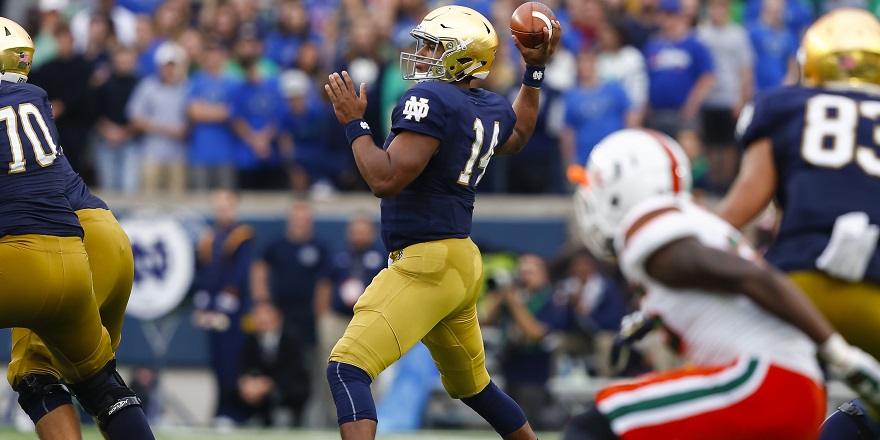
Week-to-week—and often play-to-play–consistency is the big question for Kizer, who has at least shown the ability to make every throw, handle pressure, and maneuver the pocket like an NFL quarterback. He often makes difficult stuff look easy, but he also makes the easy stuff look difficult, and his overall accuracy is below the level of the other quarterbacks in the draft class. — Steve Palazzolo, @PFF_Steve
Big Board Rank: 66
Position Rank: 15
Elder spent time at both outside and slot cornerback for the Hurricanes, but his skill-set transitions best as a slot corner in the NFL. He allowed a mere 0.33 yards per coverage snap from the slot last year, and missed just four of the 70 solo tackles he attempted, so he really shouldn’t slip beyond Day 2 of the draft. — Gordon McGuinness, @PFF_Gordon
35. DeMarcus Walker, Edge, Florida State
Big Board Rank: 67
Position Rank: 13
Walker likely fits better on the interior at the next level, but he moved around and was one of the most productive defensive linemen in the country in 2016. He used his good hands to pick up 17 sacks, 12 QB hits, and 34 hurries on 457 rushes last season, all while improving his work in the run game to grade at 83.1. He looks like one of the better interior pass-rushers in the draft. — Steve Palazzolo, @PFF_Steve
Big Board Rank: 68
Position Rank: 3
Feeney is likely the most accomplished pass-protecting guard in this class that actually played the position last season. He allowed only six QB pressures in 2015, and had allowed only one pressure through four games in 2016 before being forced to make the switch to right tackle. He then went to the Senior Bowl and dominated the one-on-ones more than anyone else that week, winning half of his reps. — Mike Renner, @PFF_Mike
37. Trey Hendrickson, Edge, Florida Atlantic
Big Board Rank: 69
Position Rank: 14
Hendrickson was by far the most productive pass-rusher outside the Power-5 conferences. His 20.5 pass-rushing productivity led the entire nation as he racked up 78 QB pressures, second-most in the nation. This comes a year after he finished second in the country with 15 sacks in 2015. Hendrickson’s only knock is level of competition. That concern wasn’t eased at all by an average showing in the Shrine game after the season. — Mike Renner, @PFF_Mike
Big Board Rank: 70
Position Rank: 5
While Kittle may not possess the size to become a reliable, in-line blocker, his sound technique, willingness to block and above-average athleticism make him a great No. 2 tight end in a “move” role. He’s one of the best in the class at blocking on the move, where he can use his athleticism and instincts to take advantage of angles and leverage. Kittle possesses the quickness and speed that should make him a versatile receiving threat capable of running routes from multiple positions, as well. At the very least, he’ll be a reliable underneath threat capable of gaining yards after the catch and moving the chains. — Billy Moy, @PFF_Billy
39. Deatrich Wise Jr., Edge, Arkansas
Big Board Rank: 71
Position Rank: 15
Another “tweener,” Wise’s best position is likely as a 3-4 defensive end. He had some issues holding up to double teams at Arkansas that limited his playing time, but he was incredibly productive on the 488 snaps he saw see as a senior. Then at the East-West Shrine Game, he utterly dominated, racking up two sacks, a hit, and five hurries. He’s still very raw, but Wise has some freakish tools to work with in the NFL. — Mike Renner, @PFF_Mike
Big Board Rank: 72
Position Rank: 4
Johnson wins the “looks the part” award, measuring in at 6-foot-7 with 36-inch arms. He’s also demonstrated the ability to utilize that length in pass protection and execute every block in the run game. That being said, he’s at No. 4 on this list because he’s still very raw. Johnson has a bad habit of overextending, and he’ll need a ton of work in pass protection. — Mike Renner, @PFF_Mike
41. Chris Godwin, WR, Penn State
Big Board Rank: 73
Position Rank: 6
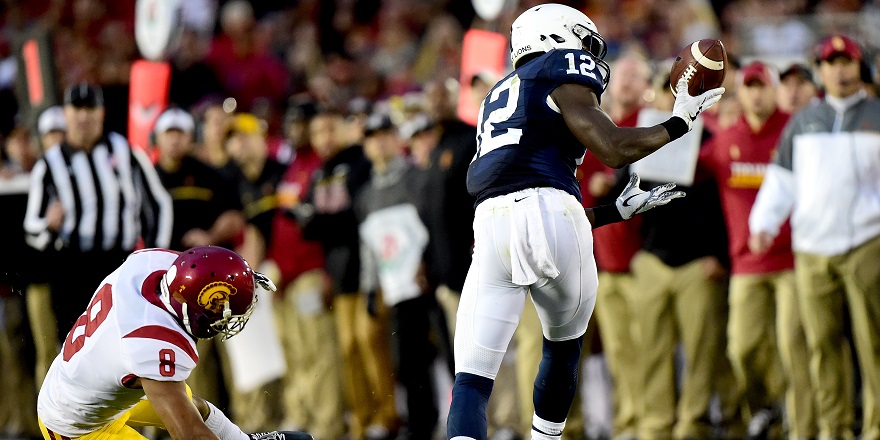
Godwin’s is a name people have been talking about all draft season as a very intriguing prospect. He was a great deep threat for Penn State mainly because of his ability to win at the catch point. He uses his body well to keep defenders off of him and can high point the ball. He’s a solid route-runner with tools to develop further. One of his attributes that NFL teams will like most is his tenacious run-blocking. Godwin was our 10th-highest-graded run-blocker among all college receivers last season. While there are some issues, such as his speed sometimes not showing up on tape and lack of open-field explosiveness, Godwin remains a solid prospect. He should find a role with the team that drafts him and one day may work himself into a consistent role as an intermediate/deep receiving threat. — Bryson Vesnaver, @PFF_Bryson
42. Dawuane Smoot, Edge, Illinois
Big Board Rank: 74
Position Rank: 16
Smoot is one of the few pass-rushers on this list with an already-refined rip move. He also has the bend that makes one think that will translate to the next level. It’s a little concerning that his junior season—60 total QB pressures—greatly outshined his senior year (53 pressures). Smoot’s two-year production as a pass-rusher, however, is still among the 10 best in this class. — Mike Renner, @PFF_Mike
43. Chris Wormley, Defensive Interior, Michigan
Big Board Rank: 75
Position Rank: 6
At 6-foot-5 and 298 pounds, Wormley is an ideal fit at 5-tech for 3-4 defenses, but can also offer versatility working both inside and out outside for a 4-3 team. He was extremely productive against both the run and pass his last two years at Michigan, totaling 84 QB pressures and 54 total defensive stops, with just four missed tackles in that span. — Josh Liskiewitz, @PFF_Josh
44. Derek Rivers, Edge, Youngstown State
Big Board Rank: 76
Position Rank: 17
Rivers is an athletic freak who dominated small competition. We don’t have a full season of data on him, but he was far from that same dominant player at the Senior Bowl. In Mobile, he was right around average in the one-on-one drills. — Mike Renner, @PFF_Mike
45. Xavier Woods, S, Louisiana Tech
Big Board Rank: 77
Position Rank: 7
Woods has had three years of strong grading, and he showed the skills to make an impact at both free safety and while covering the slot. His 85.0 coverage grade ranked 16th in the nation in 2016. — Steve Palazzolo, @PFF_Steve
46. Curtis Samuel, RB, Ohio State
Big Board Rank: 78
Position Rank: 7
Samuel is one of the most unique skill players in the draft, with the versatility to make an impact when lined up at either running back or wide receiver. Some believe that he will be a wide receiver in the NFL, and he very well may end up there. But he will need more polishing as a route runner, etc., as a receiver before he can play there exclusively, and using him in a Percy Harvin-like role may get the most out of him as a player. — Matt Claassen, @PFF_Matt
Big Board Rank: 79
Position Rank: 8
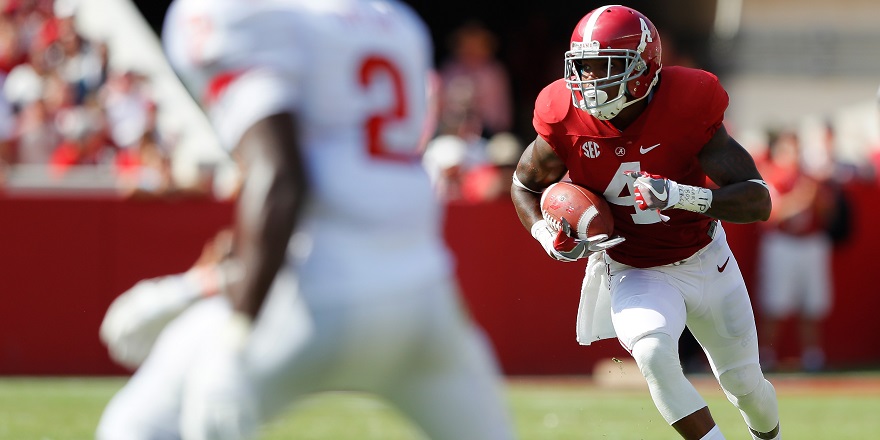
Jackson is a converted cornerback with the size and athleticism to be a versatile coverage defender at the next level when healthy. He offered little in terms of run support at Alabama, however, as he managed just one tackle and no stops on 66 snaps lined up within 8 yards of the line of scrimmage in 2016. — Josh Liskiewitz, @PFF_Josh
48. Ejuan Price, Edge, Pittsburgh
Big Board Rank: 80
Position Rank: 18
Most 5-foot-11 players simply can’t hold up on the edge in the NFL. There’s good reason to think Price is different. His balance and pass-rushing repertoire are both superb. His 29 combined sacks and hits were the second-most in the country last year. — Mike Renner, @PFF_Mike
49. Tanzel Smart, Defensive Interior, Tulane
Big Board Rank: 81
Position Rank: 7
Although shorter than ideal at just a shade over 6-foot, Smart monopolizes that advantage in leverage consistently. Sufficient length offsets his height deficiency significantly. A low center of gravity and powerful arms combine to facilitate probably the best bull-rush in the class. It is a joy to watch Smart tossing and toying with lineman who are helplessly hoping to re-anchor against the tide that is the former Green Wave product. Attempts to blow him off the ball in the ground game are also fruitless. In fact, Smart is much more likely to win his battles against the run. He flashed astounding ability to change direction in the backfield, consistently regaining his balance to fly to the football and generate tackles for loss. Smart could stand to improve as a tackler, but he represents one of the more consistently disruptive interior defenders in the class. — John Breitenbach, @PFF_John
50. Tedric Thompson, S, Colorado
Big Board Rank: 82
Position Rank: 9
Thompson was statistically the most impressive coverage safety in the country this year, although his lack of top-end speed and athleticism pushes him down the list of draft-eligible prospects at the position. He tallied seven interceptions and seven pass break-ups in 2016, and gave up completions on just 40.3 percent of passes thrown into his coverage. — Josh Liskiewitz, @PFF_Josh
[table id=1268 /]
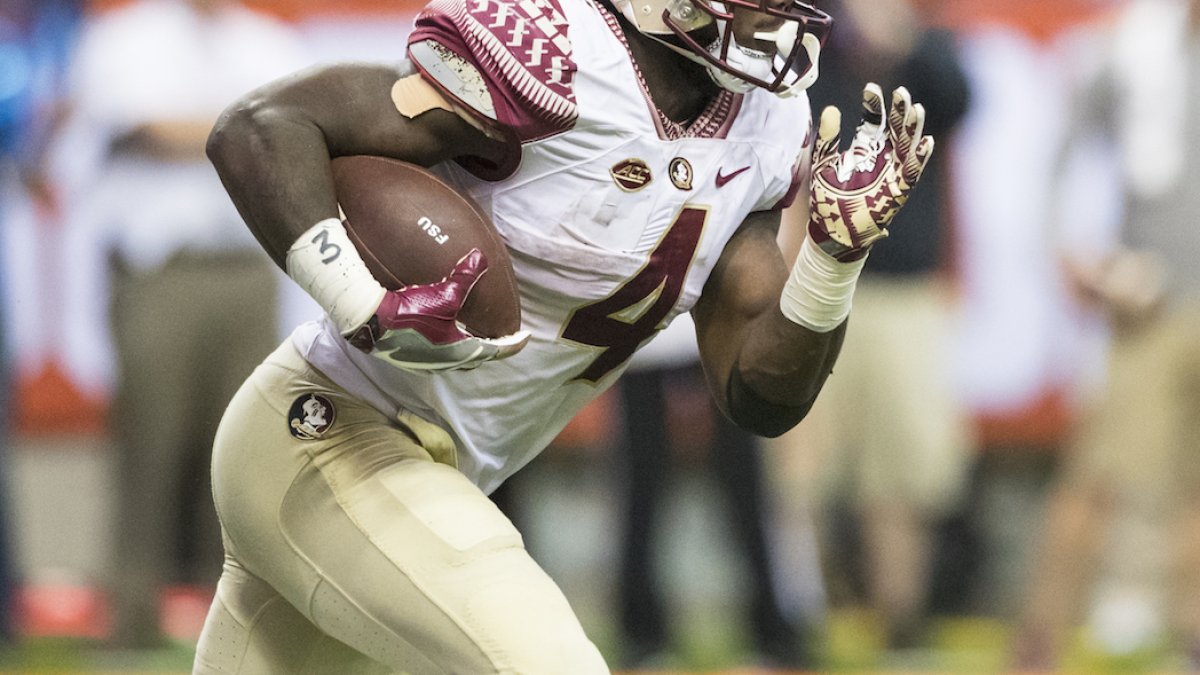


 © 2025 PFF - all rights reserved.
© 2025 PFF - all rights reserved.